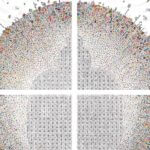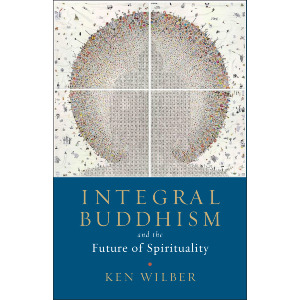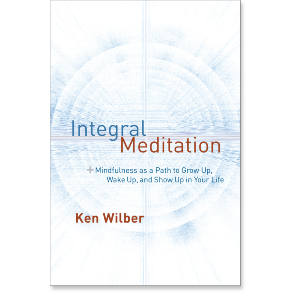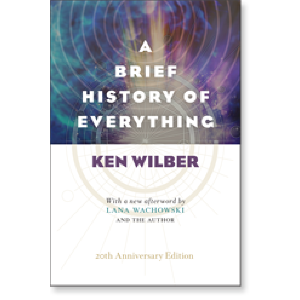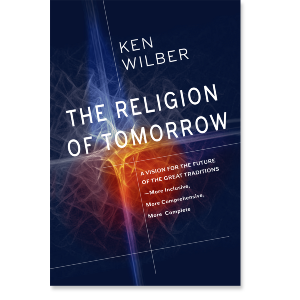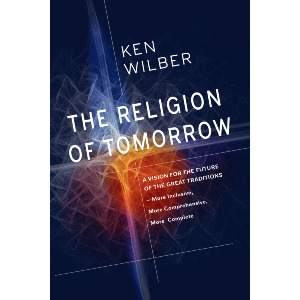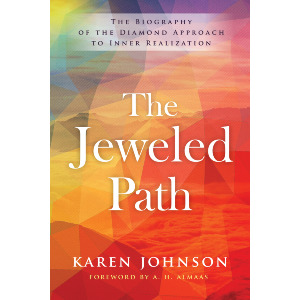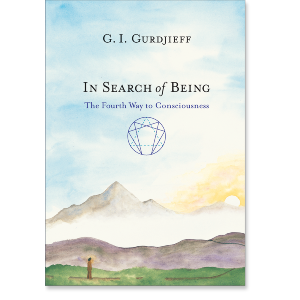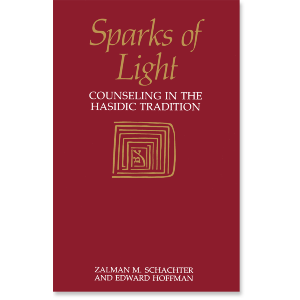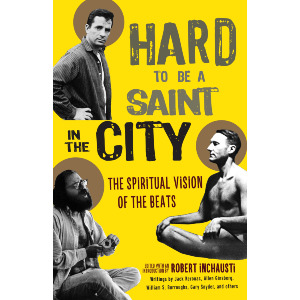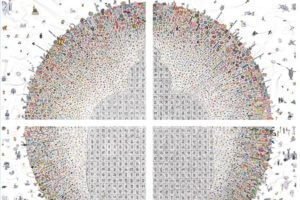
The Unique Features of Buddhism
Buddhism is a unique spiritual system in many ways, while also sharing some fundamental similarities with the other Great Wisdom Traditions of humankind. But perhaps one of the most unique features is its understanding, in some schools, that its own system is evolving or developing. This is generally expressed in the notion of the “Three Great Turnings” of Buddhism, or three major stages of unfolding that Buddhism itself has undergone. These three Turnings are, first, Early Buddhism, now generally represented by the Theravada school and thought to contain the historical Gautama Buddha’s original teachings, originating in the great Axial period around the 6th century BCE; the Second Turning of the Wheel, represented by the Madhyamika school, founded by Nagarjuna around the 2nd century CE; and the Third (and final, to date) Great Turning of the Yogachara school, originating in the 2nd century CE but having its period of greatest productivity in the 4th century CE with the brothers Asanga and Vasubandhu. As we mentioned, several Buddhists, particularly the Vajrayana schools, consider Tantra and its Vajrayana offshoots to be a “Fourth Turning,” which was particularly given form and sophistication at Nalanda University beginning around the 8th century CE.
Now the Madhyamika school, although critical of Early Buddhism in many ways, nonetheless transcends and includes many of its foundational teachings, while criticizing those notions it finds partial, limited, or incomplete. And the Yogachara school, particularly the 8th-century school called Yogachara-Svatantrika-Madhyamika attempted to integrate and synthesize all three Turnings. The Vajrayana schools likewise contain many of the teachings of the first Three Turnings, and then add their own deeply profound contributions, which, put briefly, focus not only on wisdom and compassion, but also luminosity and numerous skillful means.
The Fourth Great Turning of Buddhism
In other words, many adherents of Buddhism had a view that Buddhism itself was unfolding, with each new Turning adding something new and important to the overall Buddhist teaching itself. My point can now be put simply: many Buddhist teachers, agreeing with psychologists and sociologists that the world itself, at least in several important ways, is undergoing a global transformation, believe that this transformation will impact Buddhism itself, adding yet newer and more significant truths, and resulting in yet another unfolding, a Fourth Great Turning, of Buddhism. This Fourth Turning retains all the previous great truths of Buddhism, but also adds newer findings from fields as diverse as evolutionary biology and developmental psychology—but all of which are directly and significantly relevant to the field of spirituality itself (i.e., these are not just theoretically and speculatively oriented tack-ons). This new Turning, known by various names—from evolutionary Buddhism to Integral Buddhism—like all the previous Turnings, transcends yet includes its predecessors, adding new material while retaining all essentials. And what is so remarkable about this development is that it is completely in keeping with this general understanding that Buddhism has itself grasped—namely, that Buddhadharma is itself unfolding, growing, and evolving, responding to new circumstances and discoveries as it does so. Even the Dalai Lama has said, for example, that Buddhism must keep pace with modern science or it will grow old and obsolete.
This Fourth Turning retains all the previous great truths of Buddhism, but also adds newer findings from fields as diverse as evolutionary biology and developmental psychology—but all of which are directly and significantly relevant to the field of spirituality itself (i.e., these are not just theoretically and speculatively oriented tack-ons).
A brief glance at Buddhist history will show what is involved. Original Buddhism was founded on notions such as the difference between samsara (the source of suffering) and nirvana (the source of Enlightenment or Awakening); the 3 marks of samsaric existence—dukkha (or suffering), anicca (or impermanence), and anatta (or no-self); and the 4 Noble Truths: (1) Life as lived in samsara is suffering; (2) The cause of this suffering is craving or grasping; (3) To end craving or grasping is to end suffering; and (4) There is a way to do so, namely, the eightfold way—of right view, right intention, right speech, right actions, right livelihood, right effort, right mindfulness, and right concentrative absorption.
Early Buddhism
The ultimate goal of Early Buddhism was to escape samsara entirely—the manifest realm of life, death, rebirth, old age, and sickness—by following the eightfold way and attaining nirvana. “Nirvana” means, essentially, formless extinction. The prefix “nir” means “without,” and “vana” has meant everything from desire to grasping to lust to craving for Form itself. The overall meaning is “blown out” or “extinguished.” According to some schools, there is even an extreme form of nirvana called nirodh—or complete cessation, where neither consciousness nor objects arise at all, and might be thought of as an infinite formlessness. Be that as it may, the goal is clear: get out of samsara and into nirvana.
Such was the basic form of Buddhism as practiced for almost 800 years. Until, that is, Nagarjuna, who began paying attention to this strange duality between samsara and nirvana. For Nagarjuna, there is no ontological difference between samsara and nirvana. The difference is epistemological only. Reality looked at through concepts and categories appears as samsara, while the same Reality looked at free of concepts and categories is nirvana. Samsara and nirvana are not-two, or “nondual”—two different aspects of the same thing. And this caused a major revolution in Buddhist thought and practice.
Nagarjuna relies on the “2 Truths” doctrine—there is relative or conventional truth, and there is absolute or ultimate Truth. Relative truth can be categorized, and is the basis of disciplines such as science, history, law, and so on. That water consists of 2 hydrogen and 1 oxygen atoms is a relative truth, for example. But ultimate Truth cannot be categorized at all. Based on what is known as the “4 Inexpressibles,” you can’t say that ultimate Reality is Being, nor not-Being, nor both, nor neither. You cannot say it is Self (atman), nor no-self (anatman), nor both, nor neither. And so on for any category. The reason is that any concept you come up with makes sense only in terms of its opposite (liberated versus bound, infinite versus finite, something versus nothing, implicate versus explicate, pleasure versus pain, and so on)—yet ultimate Reality has no opposite, and thus can’t be categorized at all (including that statement). Nagarjuna says, “It is neither void, nor not void, nor both, nor neither, but in order to point it out, it is called the Void.” The Void, shunyata, or Emptiness. It’s a radical “neti, neti”—“not this, not that”—except “neti, neti” is also denied as a characteristic.
Now what this does mean is that Emptiness, or ultimate Reality, is not separate from anything that is arising. It is the Emptiness of everything that is arising. Looked at free from conceptualization or categorization, everything that is arising is Emptiness, or Emptiness is the Reality of each and every thing in the manifest and unmanifest world—it is the Suchness or Thusness of each and every thing looked at directly as it is, not as it is named, judged, or categorized. Looked at through concepts and categories, the universe appears as samsara—as built of radically separate and isolated things and events, and grasping after those and attachment to them causes suffering. But looked at with prajna (nonconceptual awareness), the world of samsara is actually self-liberated nirvana. (In the word “prajna,” the “jna,” by the way, in English is “kno”—as in “knowledge”—or “gno”—as in “gnosis”—and “pra” is “pro”—so prajna is pro-gnosis, a nondual, unqualifiable knowledge or awareness, which brings Enlightenment or Awakening. Awakening to what? The radical Freedom or infinite Liberation of pure Emptiness, though those terms are at best metaphors.)
Samsara and Nirvana
Since there is no radical separation between samsara and nirvana (samsara and nirvana being “not-two,” or as the Heart Sutra summarizes nonduality, “That which is Emptiness is not other than Form; that which is Form is not other than Emptiness”), liberating Emptiness can be found anywhere in the world of Form. One no longer has to retreat to a monastery—away from the world, away from Form, away from samsara—in order to find Liberation. Samsara and nirvana have been joined, united, brought together into a single or nondual Reality. The goal is no longer the isolated saint or arhat, but the socially and environmentally engaged bodhisattva—which literally means “being of Enlightened mind”—whose vow is not to get off samsara and retreat into an isolated nirvana, but to fully embrace samsara and vow to gain Enlightenment as quickly as possible so as to help all sentient beings recognize their own deepest spiritual nature, or Buddhanature, and hence realize Enlightenment.
The goal is no longer the isolated saint or arhat, but the socially and environmentally engaged bodhisattva—which literally means “being of Enlightened mind”—whose vow is not to get off samsara and retreat into an isolated nirvana, but to fully embrace samsara and vow to gain Enlightenment as quickly as possible so as to help all sentient beings recognize their own deepest spiritual nature, or Buddhanature, and hence realize Enlightenment.
In one sweep, the two halves of the universe, so to speak—samsara and nirvana—were joined into one, whole, seamless (not featureless) Reality, and Buddhist practitioners were set free to embrace the entire manifest realm of samsara, not avoid it. The vow of the bodhisattva likewise became paradoxical, reflecting both pairs of opposites and not just half—no longer, “There are no others to save,” the arhat’s chant, but “There are no others to save, therefore I vow to save them all”—reflecting the truth of a samsara and nirvana joined, no longer torn in two.
The Madhyamika Notion of Emptiness
The Madhyamika notion of Emptiness became the foundation of virtually every Mahayana and Vajrayana school of Buddhism henceforth, becoming—as the title of T. R. V. Murti’s book has it, The Central Philosophy of Buddhism (although “philosophy” is perhaps not the best word for a system whose goal is to transcend thought entirely).
But there were, nevertheless, still more unfoldings to occur. Particularly by the 4th century CE, the question had become insistent: granted that the Absolute cannot be categorized literally in dualistic terms and concepts, is there really nothing whatsoever that could be said about it at all? At least in the realm of conventional truth, couldn’t more systems, maps, models, and at least metaphors be offered about Reality and how to realize it?
Already, in such brilliant treatises as the Lankavatara Sutra, the answer was a resounding yes. The Lankavatara Sutra was so important it was passed down to their successors by all 5 of the first Chan (or Zen) Head-Founders in China, as containing the essence of the Buddha’s teachings. In fact, the early Chan school was often referred to as the Lankavatara school, and a history of this early period is entitled Records of the Lankavatara Masters. (Starting with the 6th Head-Founder, Hui Neng, the Diamond Sutra—a treatise solely devoted to pure Emptiness—displaced the Lankavatara, and in many ways Zen lost the philosophical and psychological sophistication of the Lankavatara system and focused almost exclusively on nonconceptual Awareness. Zen Masters were often depicted tearing up sutras, which really amounted to a rejection of the 2 Truths doctrine. This was unfortunate, in my opinion, because in doing so, Zen became less than a complete system, refusing to elaborate conventional maps and models. Zen became weak in relative truths, although it brilliantly succeeded in elaborating and practicing ultimate Truth.)
The Yogachara school came to fruition in the 4th century CE with the brilliant half brothers Asanga and Vasubandhu. Asanga was more a creative and original thinker, and Vasubandhu a gifted systematizer. Together they initiated or elaborated most of the tenets of what came to be known as Yogachara (meaning “practice of yoga”) or Vijnaptimatra (“consciousness only”) school of Buddhism, the Third Great Turning of the Wheel of Dharma.
What all schools of Yogachara have in common is some stance toward the relation of Emptiness and Consciousness. Given the fact that Emptiness and Form are not-two, then Emptiness itself is related to some everyday aspect of Form that the ordinary person is already aware of—in this case, pure Consciousness or unqualifiable everyday Awareness. All schools of Yogachara either equate Emptiness and unconstructed Consciousness directly and ultimately, or at least relatively as a useful orientation and guide for practitioners. For example, the Wikipedia article on Yogachara (I know . . . ) points out both the ultimate and relative view of the connection between Emptiness and Consciousness (or “Mind” with a capital “M”):
In this view, the Madhyamika position is ultimately true and at the same time the Mind-Only view is a useful way to relate to conventionalities and progress students more skillfully toward the ultimate. . . . [As for the view of an ultimate connection,] while the Madhyamaka held that asserting the existence or non-existence of any ultimately real thing was inappropriate, some exponents of Yogachara asserted that the Mind (or in the more sophisticated versions, primordial wisdom) and only the Mind is ultimately real. Yogachara terminology is also employed by the Nyingmapa [school of Vajrayana Tibetan Buddhism] in attempting to describe the nondenumerable ultimate phenomenon which is the intended endpoint of Dzogchen practice. . . . [The point is that] the ultimate view in both schools is the same [Emptiness or Suchness, or pure, unqualifiable, nondual Empty Awareness], and each path leads to the same ultimate state of abiding.
(One of my favorite stanzas from Tibetan Buddhism summarizes all of this as follows: “All is Mind. Mind is Empty. Empty is freely manifesting. Freely manifesting is self-liberating.”)
The Yogachara extends this notion of unconstructed fundamental Consciousness into the idea of 8 (or 9) levels of consciousness, each a transformation of foundational consciousness. The first transformation gives rise to the storehouse consciousness, or the alaya. This contains the resultant experiences of all human beings, and the seeds for all future karmic ripening. The second transformation is called (by the Lankavatara) the manas, which is the self-contraction and self-view, which then looks at the alaya and misinterprets it as a permanent self or soul, and causes the alaya-vijnana to become tainted. The third transformation creates the concept of objects—of which, in standard Buddhist psychology, there are 6—the 5 senses, plus the mind (which in Buddhist psychology is treated as another sense) and its conceptual objects (the manovijnana), giving us 8 levels of consciousness (or 9 if you count the original, pure, unconstructed Consciousness as such, or primordial empty wisdom).
It’s important to realize that for Yogachara, it’s not phenomena (or manifest events or the elements of samsara) that cause illusion and suffering, but rather viewing phenomena as objects, viewing them through the subject-object duality. Instead of viewing objects as one with the viewer, they are viewed as existing “out there,” separate, isolated, dualistically independent, tearing the wholeness of Reality into two realms—a subject versus objects. This—a product of the dualistic self-contraction of the manas and the tainted alaya-vijnana—converts Reality in its Suchness or Thusness or pure Isness into an illusory, broken, fragmented, dualistic world, attachment to which causes bondage and suffering.
This state of bondage, itself illusory, can be seen through by—quoting scholar Sung-bae Park—“a sudden revulsion, turning, or re-turning of the alaya-vijnana back to its original state of purity. The Mind returns to (or is recognized as) its original condition of non-attachment, non‑discrimination, and non-duality” (Buddhist Faith and Sudden Enlightenment [Albany, NY: SUNY Press, 1983]). In other words, by recognizing the ever-present state of Emptiness. Although most Yogacharins insisted that the end state of Emptiness of the Madhyamika is the same as in Yogachara, there is an unmistakably more positive tone to the Yogachara—certainly in the concept of Mind-Only, but also in how nonduality is conceived. For Madhyamika, nonduality is an utter blank—at least to the mind’s conceptions, although that blankness is actually seeing Reality exactly as it is, in its Suchness or Thusness, without names, concepts, categories, or prejudices. While Yogachara wouldn’t specifically disagree, it more positively defines Emptiness and nonduality as “the absence of duality between perceiving subject and the perceived object.” Again, it’s not phenomena that are illusory or suffering-inducing, but seeing phenomena as objects, as items set apart from consciousness or the subject, and existing as independent entities out there. Once they are separated from us, then we can either desire them or fear them, both eventually causing suffering, alienation, and bondage.
Tantra and the Flowering of the Third Great Turning
Now this slightly more positive view of Emptiness, not to mention its connection to Consciousness (as Zen would put it, following the Lankavatara Sutra, “The ordinary mind, just that is the way”), acted to unify Emptiness and Form in an even stronger way than Madhyamika’s revolutionary nonduality. And this had a direct hand in the creation of Tantra (and its close cousin, Vajrayana Buddhism), the real flowering of the Third Great Turning.
Tantra was developed primarily at the great Nalanda University in India from the 8th to the 11th centuries CE. For Tantra, what Early Buddhism (and most other religions) considered sins, poisons, or defilements were actually, precisely because of the union of Emptiness and Form, in reality the seeds of great transcendental wisdom. The poison of anger, for example, instead of being denied, uprooted, or repressed, as in so many other approaches, was rather entered directly with nondual Awareness, whereupon it discloses its core wisdom, that of pure clarity. Passion, when entered and embraced with nondual Awareness, transmutes into universal compassion. And so on.
Where the First Turning was the way of renunciation—denying negative states as part of despised samsara—and the Second Turning was the way of transformation—working on a negative state with wisdom until it converted to a positive state—the Third Turning and its Tantric correlate was the way not of renunciation or transformation but the way of transmutation—of looking directly into a negative state of Form in order to directly recognize its already-present state of Emptiness or Primordial Wisdom. The motto here is “Bring everything to the Path.” Nothing—absolutely nothing—is taboo—food, alcohol, sex, money—all are to be deeply befriended and lovingly embraced (within, of course, sane limits) as being ornaments of Spirit itself, direct manifestations of the ultimate Divine or Dharmakaya. And all of this because the sacred and the profane, the infinite and the finite, nirvana and samsara, Emptiness and Form, are not two different and separate and fragmented realms, but co-arising, mutually existing, complementary aspects of one Whole Reality, equally to be embraced and cherished.
Where the First Turning was the way of renunciation—denying negative states as part of despised samsara—and the Second Turning was the way of transformation—working on a negative state with wisdom until it converted to a positive state—the Third Turning and its Tantric correlate was the way not of renunciation or transformation but the way of transmutation—of looking directly into a negative state of Form in order to directly recognize its already-present state of Emptiness or Primordial Wisdom.
It was that view, which was a foundation of Tantra and Vajrayana—still prevalent in Tibet (or, alas, the Tibetan community, with Tibet brutally overrun by the Chinese) and truly radical in its nature—that many considered a genuine “Fourth Turning.” It was as if the secrets of the world of Form—too long denied, repressed, negatively judged, blamed for all sin and illusion, and ultimately rejected—actually began to give up their divine secrets when viewed as being a manifestation or ornament of Spirit itself. The ultimately wildly Free nature of Emptiness was conjoined with the radically luminous and Full nature of Form (where Emptiness is not something different than Form, but the actual Emptiness of all Form) to divulge an infinite Wholeness of self-existing, self-aware, self-liberating, radiant Reality of What there is and All there is, with the secrets of the Form side of the street providing endless new varieties of skillful means (or upaya) when directly recognized (yeshe, rigpa) as self-liberating Spirit (Svabhavikakaya, or Integrated Body of Truth, and Vajrakaya, or ultimate self-liberating Diamond Truth). Every single phenomenon, when viewed and experienced apart from Spirit, was a source of pain and suffering (dukkha), while the same phenomenon, seen as an ornament of Spirit, was a source of potential wisdom, compassion, skillful means, and playful luminosity, all arising as textures of the Primordial Buddha—to give one painfully abbreviated summary of an extraordinarily rich topic.
So, what of a possible New Turning of the Wheel? After Vajrayana and Tantra, where we bring everything to the path, what else is possibly left to bring to Buddhism that it doesn’t already have? Is this for real, or is it just some inflated, arrogant nonsense?
Well, let’s see.
This has been excerpted from Integral Buddhism: And the Future of Spirituality.
Related Books
$19.95 - Paperback
$16.95 - Paperback
A Brief History of Everything (20th Anniversary Edition)
$19.95 - Paperback
$39.95 - Hardcover
$34.95 - Paperback
$22.95 - Paperback
$26.95 - Hardcover
$19.95 - Paperback
Hard to Be a Saint in the City
$16.95 - Paperback


